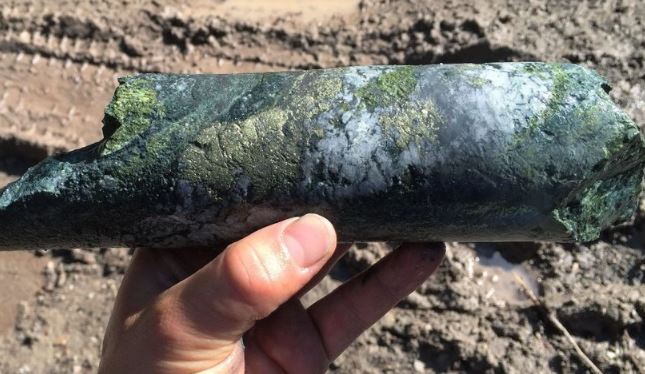Nicola explains New Craigmont copper recoveries

Nicola Mining Inc. [NIM-TSXV] shares were halted early Wednesday pending clarification of news. The trading halt was imposed after the company said recent test results highlight the potential to monetize copper contained within the historical mine terraces at the company’s 100%-owned New Craigmont Project, located in the Highland Valley porphyry district near Merritt, British Columbia.
On March 29, 2019, the company announced that testing conducted at Tomra Sorting’s Test Centre in Hamburg, Germany appeared to successfully separate copper ore from waste rock based on sulphide and gravity parameters.
Nicola said the ability to ore sort with the TOMRA Tertiary XRT Sorter Conveyor (XRT sorter) has been confirmed by assay results on samples shipped from Germany to ALS Metallurgy Laboratory.
The company said these results also highlight the potential of monetizing copper contained within the historical mine terraces at the New Craigmont Copper Project, where a portion of the approximately 80-90 tonnes surrounding the Craigmont Mine pit contains copper and magnetite.
Nicola officials could not be reached for comment on the trading halt which occurred as the shares are priced at 10 cents and trade in a 52-week range of $0.075 and 13.5 cents.
Nicola Mining is in the process of recommencing mill feed processing operations at what it has described as a “state-of-the-art mill and tailings facility,” adjacent to the New Craigmont Project. The company said it has already signed six mill profit-share agreements with high-grade gold producers.
In November 2015, the company became the first group in decades to consolidate ownership of the New Craigmont Project. The 10,000-hectare property contains the former Craigmont Mine, which produced 34 million tonnes, grading 1.3% copper between 1961 and 1982 from underground and open pit operations. It ranked as one of North America’s highest grade copper mines.
Having successfully consolidated ownership of the property in 2015, Nicola is now focused on establishing near-mine resources in the vicinity of those historic operations in a bid to establish a new resource estimate.
In October, 2018, the company launched a phase two reverse circulation drilling program on the historic Craigmont copper mine waste piles and 3060 ore portal. In response to mineralization viewed in the 49 holes drilled between 2017 and early 2018, the company completed an additional 60 reverse circulation holes (RC). The 2017 and 2018 RC campaign predominantly tested the southern terraces and the 3060 portal for mineralization in the blasted material.
At the time of mining (1963 onward), this blasted material was considered sub-economic (less than 0.4% copper). However, the company is currently assessing the viability of processing this material through the utilization of ore separation technology.
The company has also said it hopes to complete a resource estimate of the southern terraces by the third quarter of 2019.
The XRT Sorter utilizes X-ray transmission sensors to identify differences in atomic density between copper-containing mineralized material and waste material. All 29 samples were separated into eight unique tests and shipped from Germany to ALS Labs to confirm assay percentages, upgrading capabilities and copper recovery.
Five out of eight tests provided upgraded copper grades of greater than 1% copper and up to 50% iron.
“The positive assay results receive from ALS Metallurgy Laboratory on the Tertiary XRT sorter conveyor material is very encouraging,” said Nicola CEO Peter Espig. “Given the historic materials’ approximate 80-90 million tonnes and no direct mining costs associated with extraction, the ability to upgrade material could add significant value to our project,” he said.
“We are currently testing the material for copper and magnetite recovery and will issue the results once received.”
